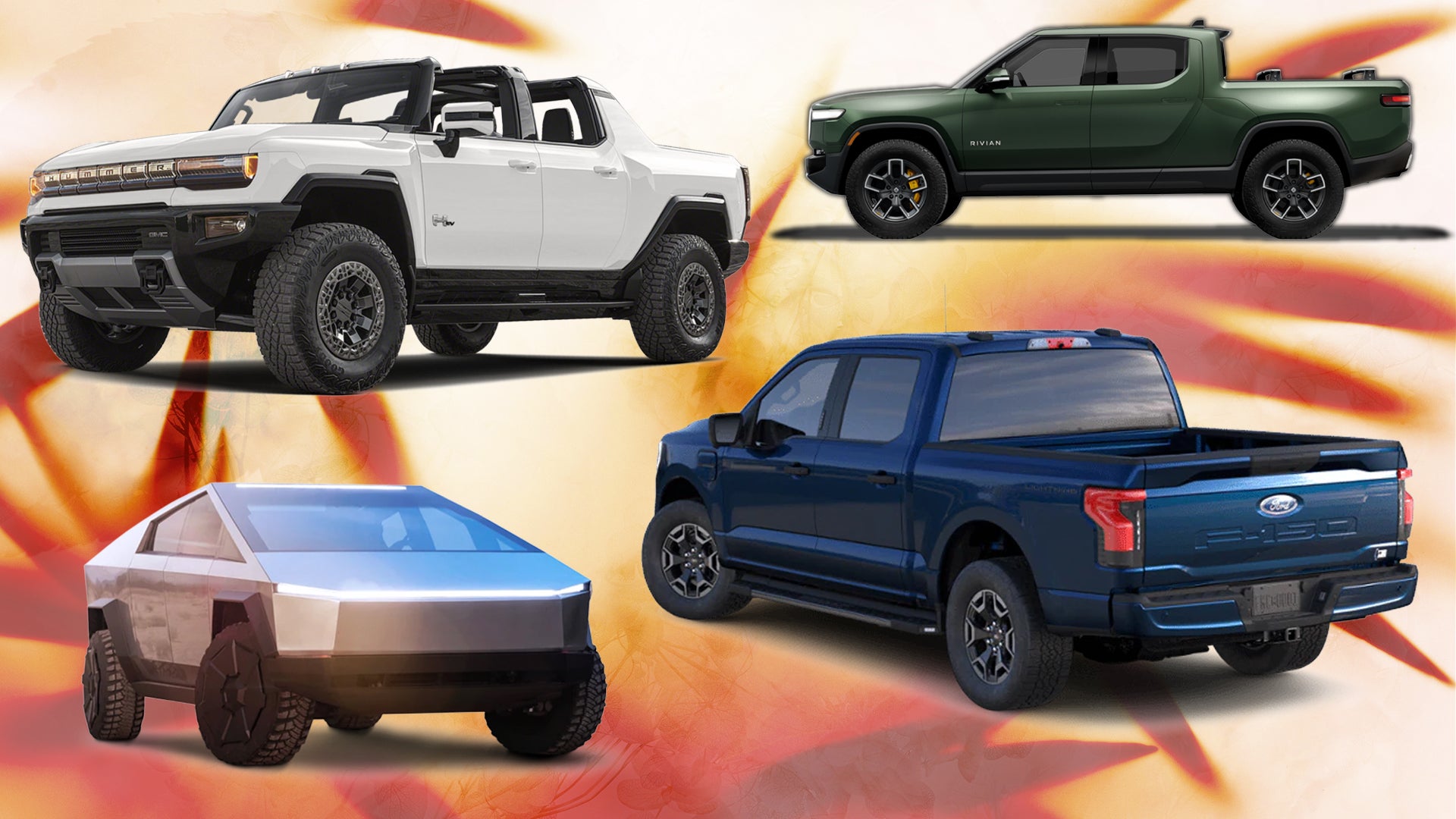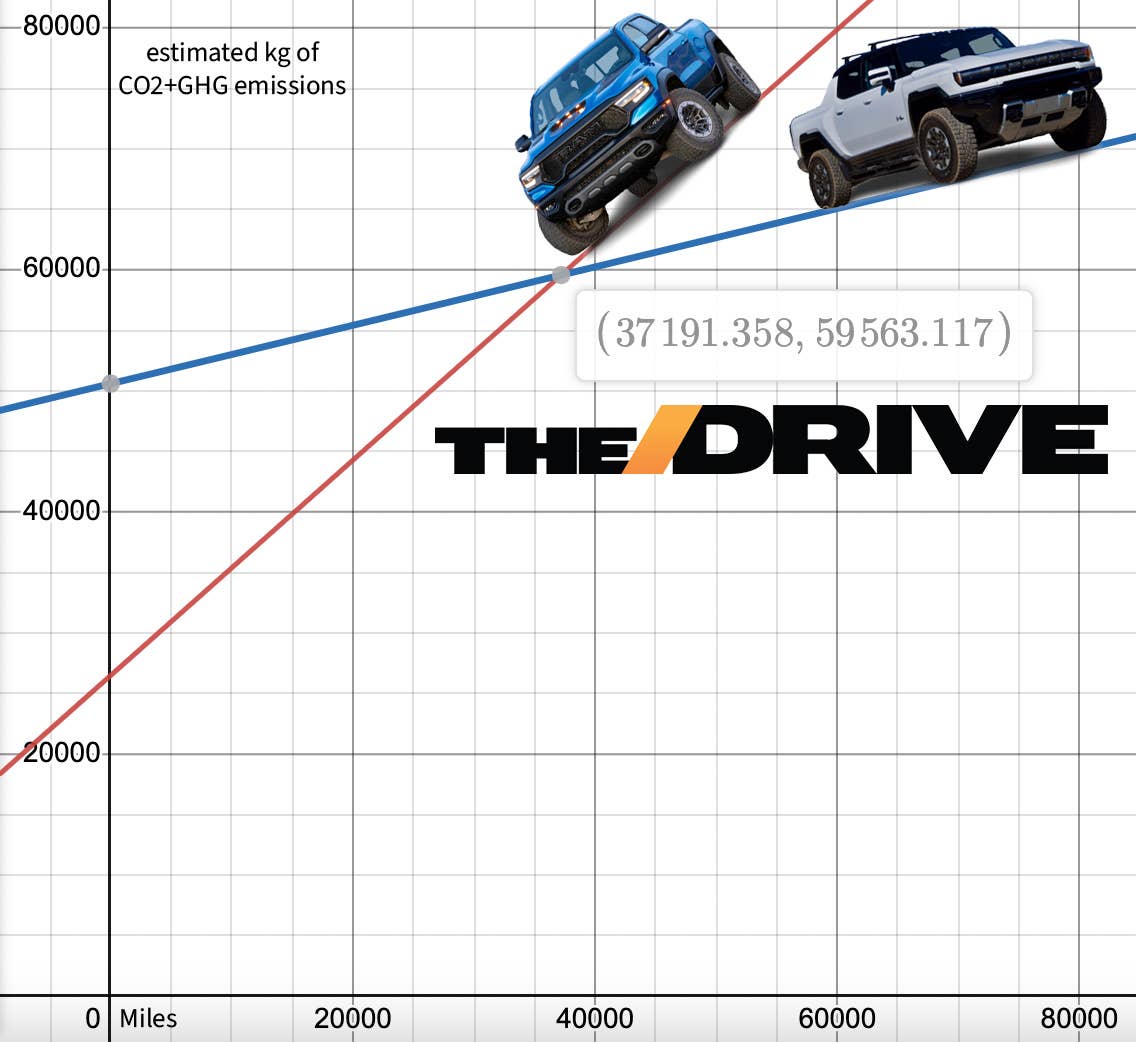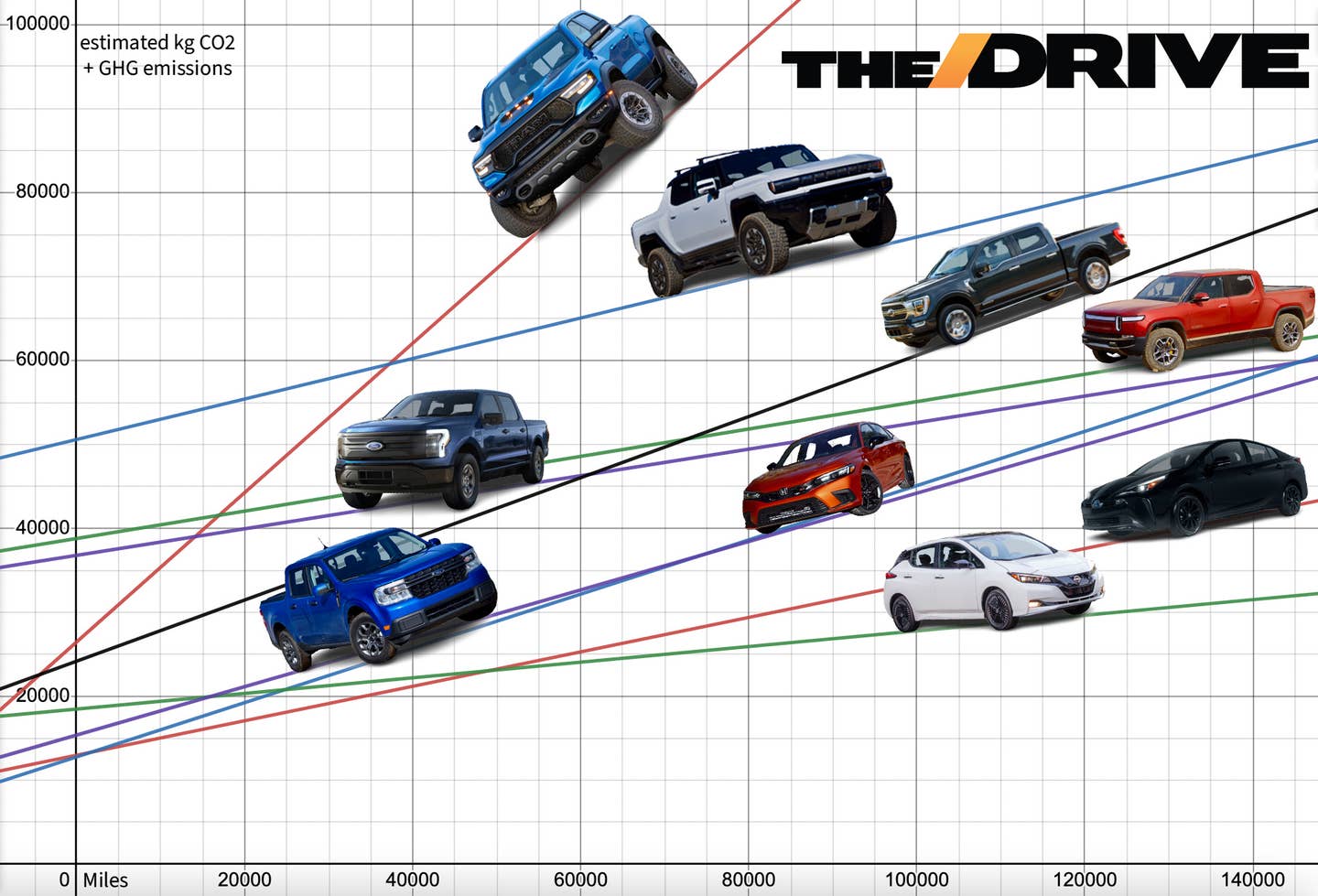OfTheCross
Veteran

Greenwashed: Electric Pickup Trucks Are Dirtier Than You Think
The fact that electric trucks don't spew exhaust in residential areas is a plus. But sending pollution elsewhere isn't the same as eliminating it.
The Efficiency Problem
Why electric trucks aren't so green starts with a simple matter of physics: a 3,000-pound car needs a fraction of the energy to travel a mile that a 9,000-pound vehicle does. Throw in the preferred form factor of American pickups—big, heavy-duty, and squarer than the jaw of the person driving it—and an electric truck needs a much larger battery than an electric car to cover the same promised 300+ miles of range expected of today's EVs. (That baseline expectation alone is problematic for battery production emissions, but we'll leave that for another time.)A bigger battery in turn adds weight, whose penalty must be offset with an even bigger battery, and so on until you end up with something like the GMC Hummer EV weighing 9,000 pounds. Its 2,900-pound, 212.7-kWh lithium-ion battery can propel it 329 miles. It's about a third as efficient as a shapely Lucid Air, which can travel over 500 miles using a battery half that size.
The problem is better illustrated by MPGe, or miles-per-gallon equivalent, the metric intended to calculate the distance an electric (or electrified) vehicle can travel by expending the same amount of energy in a gallon of gas. It's fairly useless in the real world, but it is good for comparing the overall efficiency of EVs. The GMC Hummer EV has an MPGe rating of 47. That's exceptionally poor for an electric—but even trucks like the 70-MPGe Rivian R1T are well behind things like the 97-MPGe Ford Mustang Mach-E or the 125 MPGe Tesla Model Y.
Lower efficiency means charging more often. Charging more often means more energy consumption. You can see where this is going.
Carbon Cost of Entry
Transitioning from gas-guzzler to watt-waster doesn't exactly feel like progress, but at least it's a step in the right direction, right? Yes—except there's one not-so-small snag. In large part because of the batteries, manufacturing electric vehicles releases significantly more emissions than building ICE cars, big electric trucks even more so. Not only do electric trucks pay off their carbon debts slower than pretty much any other car, they have more CO2 to answer for in the first place.How much more isn't something most automakers could—never mind would—tell you. Most car companies have not publicized life-cycle carbon assessments for their products that would clarify the environmental impact of their EVs' manufacture, disposal, and to a smaller degree, use. I contacted current and future electric truck producers Ford, General Motors, Ram, and Rivian for such assessments, and only received responses from GM and Rivian, neither of which had conducted such a study.
So far, the one exception to the rule is Polestar, the Sino-Swedish offshoot of Volvo focused on EVs. It has released a life-cycle carbon assessment of its first EV, the Polestar 2, which offers intriguing insights into the true impact of car manufacturing. For a variety of reasons, Polestar's study can't paint an accurate picture of the auto industry as a whole, but its numbers are the only ones available. What's more, they still let us make an educated guess as to the CO2 generated by producing trucks like the Hummer EV—and as a result, how long it takes one to break even with an equivalent ICE truck.
Applying the Data, or: You Can't Fight Physics
Of course, a Hummer EV is supposed to mark an improvement over a similar fossil-fueled truck, such as the Ram TRX, with which it shares its overkill attitude and emphasis on acceleration and off-road performance. The Ram's horrible gas mileage (about 12 mpg combined) is a good match for the Hummer's resource-intensity and inefficiency, too. Using that Polestar-Volvo data, we can estimate a TRX's production to be associated with 26.5 metric tons of CO2, while FuelEconomy.gov rates it at 889 grams of CO2 (and upstream greenhouse gas emissions) per mile driven. Based on the U.S. energy production average 386 g CO2/kWh, the Hummer EV's 1.6 miles per kWh means it's responsible for 241 grams of CO2/mi, or just over a quarter of what the TRX emits.It takes just under 37,200 miles to achieve parity with a TRX, at 59.6 metric tons of CO2 emitted over the total life cycle, and finally, it's all gravy for GM from there.

Estimated CO2 emissions of the 2022 GMC Hummer EV and 2022 Ram TRX by miles driven | The Drive
The graphs above and below compare life-cycle CO2 and GHG emissions in kilograms on the y axis and miles driven on the x axis. Both trucks start well above zero, because manufacturing is energy-intensive and thus generates a significant environmental impact. Though the Hummer EV has a big head start on emissions, the Ram's steeper ascent as it burns gas means it catches up to the Hummer at 37,191 miles. Improving on a TRX's environmental impact isn't exactly something to brag about, though, and it's hard to call an accomplishment when the Rivian R1T breaks even with the TRX sooner, just before the 17,000-mile mark with 41.6 metric tons of CO2 on the board. Unwind this same math elsewhere and it shows the Ford F-150 Lightning doesn't turn the table on the hybrid F-150 Powerboost until around the 61,000-mile mark, at 46.5 metric tons of CO2. On one hand, it demonstrates electric trucks inevitably do become the greener option compared to ICE trucks over time. On the other, what happens to the calculation if the Lightning needs a new resource-intensive battery at 150,000 miles and the gas version keeps running just fine?
An electric truck is still a truck, and its shape makes it permanently less efficient than an electric car. But the graph below takes it one step further and throws in the lifecycle emissions for some gas-powered economy cars for good measure. And lo: those too pollute less than electric trucks.

Estimated CO2 and greenhouse gas emissions of various vehicles by mileage | The Drive
Down there at the bottom are a selection of economy cars with differing drivetrains, including the regular Honda Civic, the hybrid Toyota Prius, and electric Nissan Leaf, with the hybrid Ford Maverick thrown in for the hell of it. Interestingly, while the Civic and Maverick track each other over the first couple hundred thousand miles (reaffirming my belief that the Maverick is a Corolla-killer in disguise), and hover around the Hummer's CO2-per-mile, their comparatively tiny size and manufacturing impacts mean their lines never converge. And it'd take over 140,000 miles for them to catch up to the tamer Rivian R1T and Ford F-150 Lightning.

